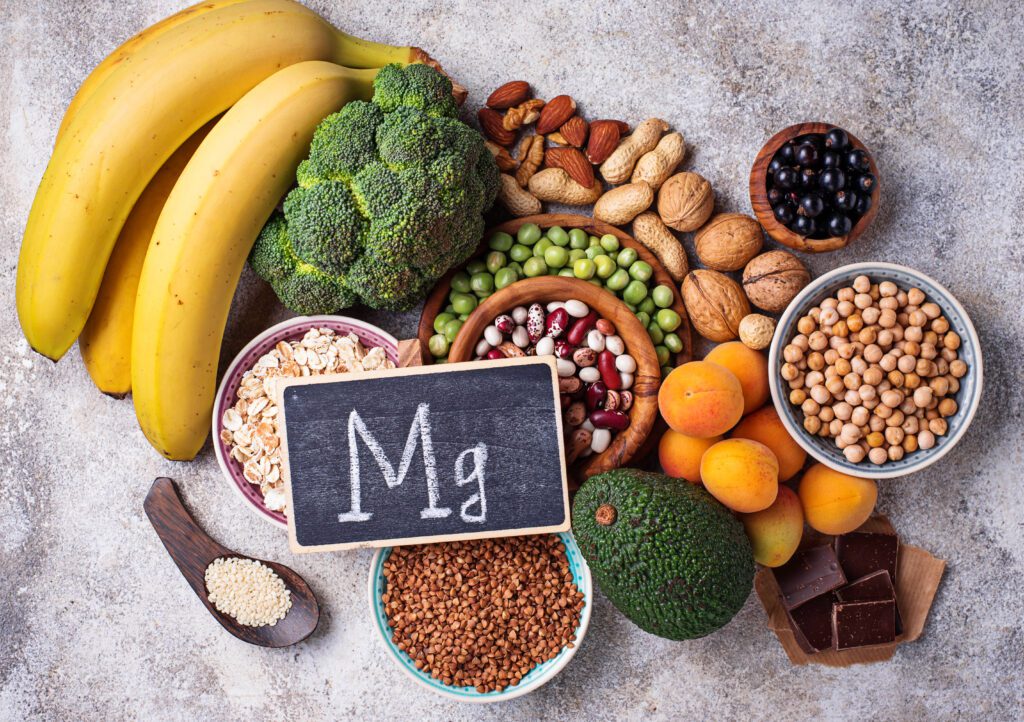Magnesium is one of the most essential minerals in the body. It plays a role in over 300 enzyme reactions, regulates blood pressure, supports muscle and nerve function, and helps produce energy. Many people turn to supplements when they suspect a deficiency. However, magnesium from natural food sources is often better absorbed, more balanced, and carries fewer side effects. Plus, food sources provide a host of other nutrients that work together for better overall health. Let’s explore some of the best natural foods that offer magnesium in its most beneficial form and why they work better than popping a pill.
Why Magnesium Is So Important
Before diving into food sources, it’s important to understand why magnesium matters. Your body uses magnesium to regulate muscle contractions, support heart health, balance blood sugar levels, and maintain healthy bones. A lack of magnesium can cause muscle cramps, anxiety, fatigue, and irregular heart rhythms. While supplements seem convenient, they often come with problems like poor absorption or digestive upset. Natural foods, on the other hand, deliver magnesium along with fiber, healthy fats, and antioxidants, which improve bioavailability and provide added health benefits.
Magnesium From Food vs Supplements
Many supplements contain forms of magnesium that are not easily absorbed. Magnesium oxide, one of the cheapest and most common types in pills, has an extremely low bioavailability. In contrast, magnesium from whole foods is more readily absorbed because it’s bound to natural compounds like amino acids or citrate. When magnesium comes from plants or animals, it often enters the bloodstream more efficiently. Whole foods also provide cofactors like vitamin B6 and potassium, which help the body process magnesium better. While supplements may help in medical emergencies, long-term use is rarely as effective as eating the right foods.

Spinach: A Magnesium Powerhouse
Dark leafy greens like spinach are among the best sources of natural magnesium. Just one cup of cooked spinach delivers nearly 40 percent of your daily needs. It also provides iron, vitamin K, and antioxidants like lutein. Magnesium in spinach is bound to chlorophyll, the green pigment in plants, making it easy for your body to absorb. Cooking spinach can reduce oxalates, which otherwise inhibit magnesium absorption, so steamed or sautéed spinach is often better than raw in this case. It’s easy to add to soups, smoothies, or stir-fries, making it one of the most flexible options for boosting magnesium naturally.
Pumpkin Seeds: Small but Mighty
Pumpkin seeds, also known as pepitas, pack a serious magnesium punch. Just two tablespoons provide over 150 milligrams of magnesium, which is nearly 40 percent of the recommended daily intake. They also contain zinc, iron, and heart-healthy fats. Roasted or raw, pumpkin seeds can be added to oatmeal, salads, or trail mix. Unlike supplements, which often lack supporting minerals, pumpkin seeds offer a balanced profile of nutrients that improve magnesium absorption and support immune function. Their versatility makes them an easy addition to any diet aiming for better mineral intake.
Avocados: Creamy and Magnesium-Rich
Avocados are famous for their healthy fats, but they’re also a great source of magnesium. One medium avocado contains about 58 milligrams of magnesium, along with potassium, fiber, and folate. The fat in avocados helps transport magnesium across cell membranes, improving absorption. Avocados are also free from additives or synthetic compounds that can interfere with mineral uptake. Whether sliced on toast, mashed into guacamole, or blended into smoothies, avocados are a delicious way to support your magnesium needs with real food.
Almonds: A Snack That Supports Heart Health
Almonds are not only great for snacking, they’re also rich in magnesium. One ounce contains roughly 80 milligrams, or about 20 percent of the daily value. Almonds also provide vitamin E, protein, and monounsaturated fats. They help reduce inflammation, lower blood sugar, and support cardiovascular function. Because they contain fiber and fat, almonds release energy slowly, helping maintain stable blood sugar levels alongside magnesium delivery. Eating almonds instead of taking a supplement also eliminates the risk of overdose or digestive upset that can come with synthetic magnesium.
Black Beans: A Plant-Based Mineral Source
Black beans are a magnesium-rich legume that fits into most diets. One cup of cooked black beans has about 120 milligrams of magnesium, along with protein and fiber. Beans also provide potassium and iron, creating a balanced mineral profile. The soluble fiber in black beans slows digestion, improving nutrient absorption and regulating blood sugar. They’re easy to incorporate into soups, stews, tacos, or grain bowls. Plus, the magnesium in black beans is supported by natural plant compounds that enhance mineral bioavailability, making them a smart and affordable choice for everyday meals.
Read More: Calcium-Packed Foods That Are Just as Good As Drinking a Glass of Milk
Dark Chocolate: A Sweet Magnesium Boost
Surprisingly, dark chocolate is a good source of magnesium. One ounce of dark chocolate with at least 70 percent cacao contains up to 64 milligrams of magnesium. It also offers iron, copper, and powerful antioxidants like flavonoids. These compounds help reduce inflammation and support blood flow, which complements magnesium’s role in heart health and muscle relaxation. Choose chocolate with minimal sugar and no added milk to get the most benefit. While it shouldn’t replace whole plant foods, high-quality dark chocolate can be a satisfying way to meet part of your magnesium needs.
Bananas: An Easy and Affordable Option
Bananas are better known for their potassium content, but they also offer a decent amount of magnesium. A medium banana contains about 32 milligrams of magnesium. They’re also rich in vitamin C, B6, and fiber. Bananas are especially useful for athletes, as their combination of potassium and magnesium supports muscle recovery and fluid balance. The natural sugars in bananas help shuttle magnesium into cells, boosting absorption during or after physical activity. Their convenience makes them ideal as a pre-workout snack or afternoon energy boost.
Quinoa: A Mineral-Rich Grain Alternative
Quinoa is often labeled a superfood for good reason. It’s a complete protein that also contains over 110 milligrams of magnesium per cooked cup. Unlike refined grains, quinoa retains its natural minerals and is easy to digest. It also contains phosphorus, iron, and B vitamins, which support magnesium metabolism. Quinoa can be used as a base for salads, side dishes, or breakfast bowls. Its versatility and high mineral content make it one of the best grain alternatives for people looking to increase their magnesium intake without relying on supplements.
Tofu: A Vegan-Friendly Magnesium Source
Tofu is made from soybeans, which are naturally high in magnesium. Half a cup of firm tofu contains around 85 milligrams of magnesium. It also provides protein, calcium, and iron, making it ideal for plant-based diets. The calcium-magnesium balance in tofu helps support bone health and muscle function. Since tofu easily absorbs flavors, it’s simple to incorporate into stir-fries, curries, or even desserts. It’s one of the most efficient and flexible magnesium sources for vegans and vegetarians who want to skip supplements and stick with real food.
Edamame: A Snack with Substance
Edamame, or young soybeans, are another excellent plant-based source of magnesium. One cup of cooked edamame offers nearly 100 milligrams of magnesium. They also contain folate, vitamin K, and plant-based protein. Edamame is rich in fiber, which helps slow the digestive process and allows for better nutrient absorption. They’re easy to prepare and work as a quick snack or salad topper. Their natural magnesium content, combined with fiber and protein, supports healthy muscles and nerves better than most pill-based supplements.
Chia Seeds: A Tiny Seed with Big Benefits
Chia seeds are small, but they carry a high mineral load. Two tablespoons provide about 95 milligrams of magnesium. They also offer calcium, omega-3 fatty acids, and fiber. Chia seeds absorb water and form a gel, which can aid in digestion and improve mineral absorption. They’re great in smoothies, oatmeal, or yogurt, and they can even be used to make chia pudding. Unlike isolated magnesium supplements, chia seeds support digestive health while delivering a high dose of bioavailable magnesium in a compact form.
Cashews: A Rich, Creamy Option
Cashews are often overlooked in favor of almonds, but they’re a great source of magnesium too. One ounce of cashews contains about 74 milligrams of magnesium, along with copper, phosphorus, and healthy fats. Cashews are particularly helpful for brain function and muscle coordination. The creamy texture and mild flavor make them ideal for snacking or blending into sauces and spreads. Unlike synthetic supplements that can irritate the stomach, cashews offer a gentle, natural way to boost magnesium levels through whole food.
Swiss Chard: A Leafy Magnesium Source
Swiss chard is another leafy green that rivals spinach for magnesium content. One cup of cooked Swiss chard delivers over 150 milligrams of magnesium. It also contains potassium, calcium, and vitamin A. Like other dark greens, Swiss chard supports heart health and bone strength. Cooking Swiss chard reduces compounds that inhibit magnesium absorption, making it more bioavailable. Whether sautéed with garlic or added to soups, this vibrant green is a strong contender for magnesium-rich diets that focus on real food instead of pills.
Brown Rice: Better Than White for Magnesium
Refined grains lose a lot of their magnesium during processing. Brown rice retains the bran and germ, where most of the minerals reside. One cup of cooked brown rice has about 84 milligrams of magnesium. It also includes B vitamins and manganese, which help the body use magnesium more efficiently. Brown rice pairs well with stir-fries, beans, or roasted vegetables, making it a practical base for nutrient-dense meals. Switching from white to brown rice is a simple dietary change that can significantly increase your magnesium intake naturally.
Read More: 20 Foods That Reduce Blood Pressure Naturally, Say Health Experts
Real Food Wins the Magnesium Battle
Supplements may seem like a shortcut, but real food remains the gold standard for magnesium intake. Whole foods provide magnesium in a form your body recognizes and absorbs better. These foods also offer a wide range of complementary nutrients that support overall health. From spinach to pumpkin seeds, avocados to tofu, nature offers plenty of delicious options that outperform pills.
By eating a variety of magnesium-rich foods, you give your body not just one mineral, but a complete nutritional package. Unlike isolated supplements that often cause digestive discomfort or poor absorption, whole foods nourish your system holistically. If you’re serious about increasing magnesium levels without relying on synthetic pills, focus on building meals around these powerhouse ingredients. Your muscles, bones, heart, and brain will thank you.










